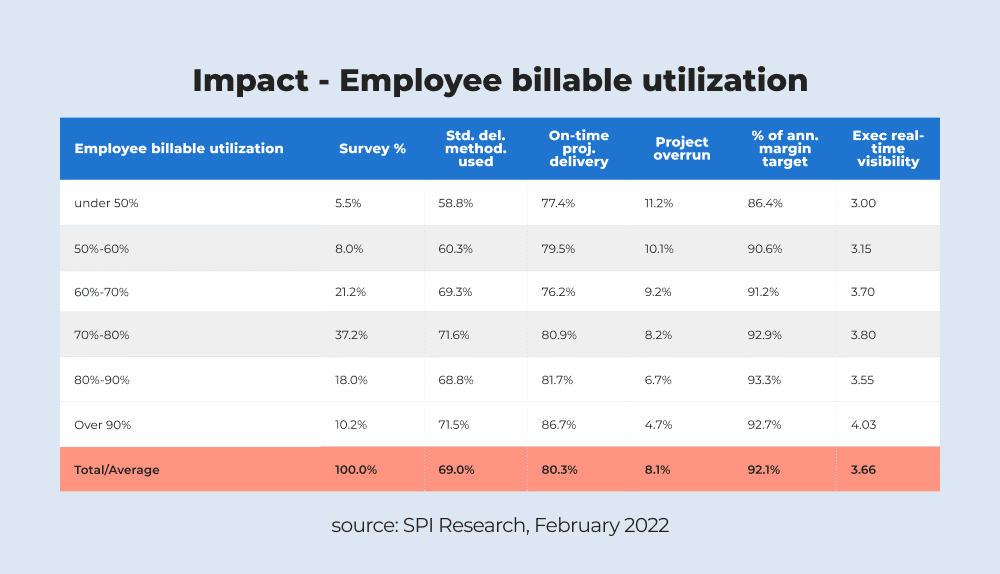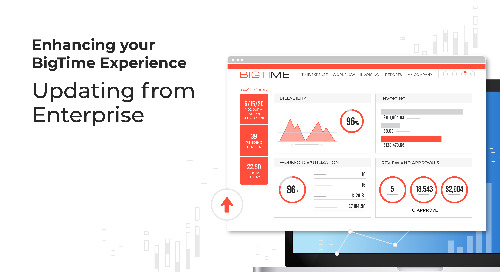Using your employees’ time to the fullest is key to achieving maximum productivity and profits. However, you’d be surprised at how many professional services companies do not measure and monitor the utilization of their employees.
What is a good employee utilization rate? We’ve prepared a benchmark to help you monitor that indicator in every industry!
What is a good employee utilization rate?
While a good utilization rate is often considered above 65%, and ideally above 75%, there is no single number that fits every situation.
The desired utilization rate depends on different factors — here are a few of them.
What does a utilization rate depend on?
The ideal utilization rate for a given employee varies dramatically depending on a few different factors.
First is the seniority of the specialists in question. The range of responsibilities and assigned tasks changes with the person’s position — the higher the position, the more organizational processes affect their utilization. Because of that:
- Interns and junior-level employees are expected to spend around 90% of their time on billable tasks.
- More experienced employees should be booked for at least 80% of their time.
- Senior employees, who usually participate in the organizational processes as experts, should spend around 60-70% of their time on development tasks.
- Managers, as they are mostly responsible for supervising the work, should only allocate around 30-50% of their time.
- Executives rarely book their capacity at all; their range of responsibilities are simply too broad to be assigned to a single project.

Second is the industry. Companies in certain fields are more likely to monitor the time their employees spend on different tasks. For example, an average utilization rate at a production company is above 80%, while in architecture, the value is closer to 60%. That’s a huge difference.
Utilization Rate in Different Industries Benchmark
Here’s what a good utilization rate looks like in different industries that tend to measure this KPI for their employees:
- Professional services: around 70-75% (depending on the specialization)
- Production & manufacturing: 80-90%
- IT services: 75%
- Marketing: 70%.
How does utilization affect your company’s performance?
It has been proven time and time again that improving utilization improves the financial performance of the company.
Additionally, utilization affects two other key performance indicators: cost overrun and annual revenue per employee.
Utilization vs. Annual Revenue Per Employee
According to SPI’s Professional Services Maturity Benchmark (PSMB), billable utilization also improves annual revenue per employee. This research shows that the higher the utilization, the higher the revenue — up to 14% more.


Utilization vs. Project Overrun
SPI’s Professional Services Maturity Benchmark also shows that utilization can drastically reduce project overrun in companies. Companies with billable utilization below 50% had an 11% chance of experiencing overrun; meanwhile, businesses with utilization over 90% only had an 8% chance of encountering this problem.


Why is 100% utilization impossible to achieve?
Many managers think that only a 100% utilization rate is perfect; however, that is impossible.
A day for every single employee consists of numerous activities, including meetings, breaks, and communication with other team members and organizational units. As a result, an employee simply cannot spend 100% of their time on planned activities. Therefore, no industry can achieve a 100% utilization rate.





